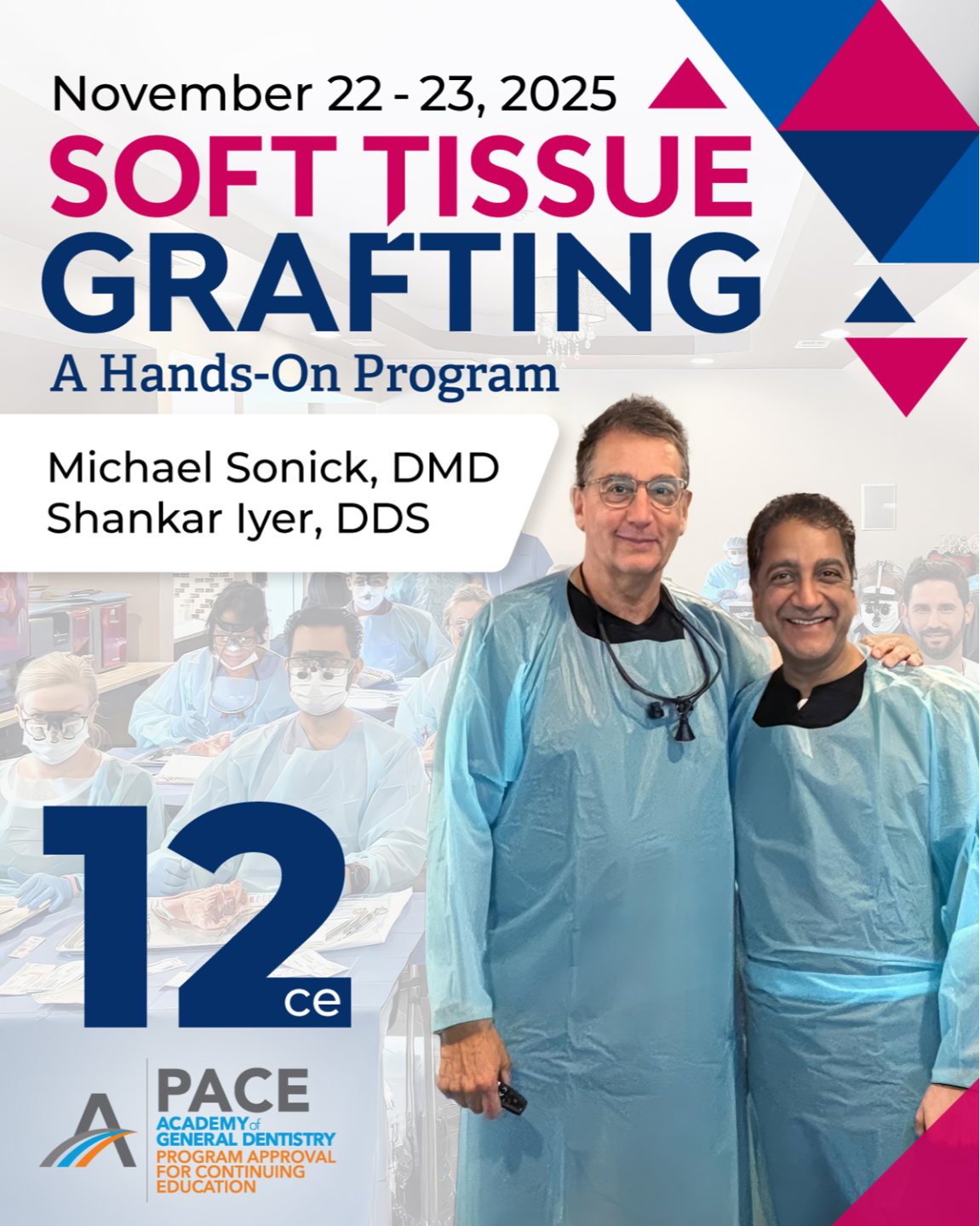Testimonial Videos for Your Dental Practice (My Best Tips!)
Aug 21, 2024Today, we're going to talk about a very important skill, and that's making a patient video. What does that mean? These are videos that we make in our office following patient care when a patient has had a good experience. Hopefully, most of our patients have had good experiences, but this is when we have a particularly good experience, and we want to post that video on our website.
Now, if you go to our office's website, my last name, sonicdmd.com, you can see close to 200 patient videos. When you look at these patient videos, what you'll see immediately is that they're all different. You've got old people, young people, male, female, and all different types of people with various hairstyles and clothes, etc. You've got people that are preppy, and people that are sort of hip. You know, you've got people that may not be hip or preppy at all but sort of look like they could use a makeover. So, we've got all sorts of people up there. Why? Because those are the people that we treat.
Not everyone looks the same who comes into our office, and that's an important point. Our patients are not the same. We can't treat them all the same. Everybody is an individual. They come with their own agenda, their own type of restorative needs, their own type of periodontal needs, their own type of fears, their own financial concerns, time constraints, etc. All the things that patients present when they say, "I can't go through with treatment because of this, this, or this." Usually, they say money, but it's usually not money; it's usually their fear. Okay? Fear of not being taken care of.
So that brings me to the next point. These videos that we place on our website, I share with new patients—not every new patient, but a certain number of new patients. I might say to them, "Oh, you are of this age. You're going through this type of restoration. See this picture of Danny up here? He has the same restoration that you have. This is 60 seconds of what he has to say about that."
Now, I never go over these videos with the patient. I never say, "Hey, look, I'm going to watch this video with you." I'll direct them to the website and say, "When you go home, sit down with your spouse, and you can look at a couple of these videos and see what it's like to go through treatment in our office." That's a very powerful message. How many of you have 200 patient testimonials on your website? Some of you might, but most don't. How do I know that? Because I go to people's websites. That's another topic for another day. But your website should be very well curated and should have all your own original content on it if you're going to increase your case acceptance to get over 90%.
So how do we make these videos? Well, the importance of them, I told you, is that people feel comfortable that they are in the right place, that you're the right doctor to take care of them, and that your team knows how to take care of them. How do they know that? Well, they know that for a lot of different reasons, but the video is just one more reason that can make them feel comfortable that they're in the right office.
So, those videos are important. We started making them, oh, maybe about 15 years ago. Actually, I started doing it longer than that, 30 years ago. I had this old VHS. We used to film them like this, and I had to edit them. They were really complicated. I learned a lot from these videos because patients are very open when they start talking in front of a camera. I learned things like, "I never went out to dinner. My husband is upset with me because I won't go to a party because I'm embarrassed about my teeth, so we stay home." It became problematic in my marriage. "I didn't go to my daughter's baby shower because I was afraid that my teeth were going to fall out. I won't smile. I don't let anyone take my picture. I've been in pain for so many years now." They don't always tell me this at the first visit, but this is what they'll tell me after treatment.
So, I learned a lot from my patients. What does that do? It helps me ask the right questions when a patient comes into my practice for the first time. So, I can say, "Hey, I bet you have dreams." Now, guess what's the most popular dream? I don't know if "popular" is the right word, but guess what's the most common dream in the United States and Australia? Do you know what that is? It's that they are waking up and their teeth are falling out. So, if you ask any of your new patients who come in with severe periodontitis and loose teeth, ask them, "I bet you were dreaming that your teeth are falling out." They're going to think that you're prophetic. They're going to think that you're brilliant, that you're like the Great Carmack. But that's what they do. They dream that their teeth are falling out. So, people who have bad teeth dream that their teeth are falling out. It's a very common dream. I don't know if you know that or not, but I see that all the time.
So, let's get back to the important point. How do you go ahead and make the video? After I'm done with treatment, we have this all set up. Sometimes, I'll just pick up my iPhone, hold it up to the patient, and say, "I'd like to do a video. Now, if you're happy with the care, would you mind doing it?" I hold up the camera, and then we'll hold a piece of black cloth behind them. So, anybody can do that. You all have iPhones or Androids, and you can all get a piece of black cloth and hold it behind the patient and then just film it. Make sure it's 60 seconds or less. Then get their permission, have them sign a slip.
In our office, we have a little studio, which is very simple. You can set this up, just have a camera with a little bit of background, a nice little light on the patient. I have an IT guy in my office who's been with me for eight years who's brilliant. Not everybody has a brilliant Jose in their office, but I have one. I'd recommend you get one—that's a different topic. But it's very important that you hire somebody who knows how to take a little video, and they can do it for you. So, Jose is up there doing things on a different floor of the office, working on the website and IT stuff. And I say to Jose, "Hey, Jose, can you take a video?" And he's always ready because the camera is set up, and it will take a 60-second video. He asks them questions to make them feel comfortable. He puts on a little music. He'll offer them an espresso if they want to have an espresso before. He makes it seem like a very nice place. Christian Coachman talks about this when he talks about making it a very nice office with nice music, etc., when you're showing a patient a smile. We try to do the same thing. We have a little studio for that.
But if you don't have a studio, you can make it as simple as just holding up the iPhone. Now, a lot of you are saying, "Well, what if they say no?" Yes, you're going to get some resistance. Of course, you're going to get resistance. Whenever you ask somebody to do something, there's going to be some resistance. So what do you do? What we do in our practice is I ask them to do it. Some of them say yes, some of them say no. I say, "I'll give you a free electric toothbrush. It's a $175 value. Or you can get your teeth cleaned, about a $175 value." So for $175, they will take five minutes and shoot that video. We have the toothbrushes wrapped up in gift bags with little ribbons and bows on them, and they're all ready to go. So, we hand it to them like it's something very special. And I find that about 95% of my patients say yes to making that video.
So, if you haven't made one yet, try it. How do you try it? Ask your dental hygienist to sit down in a chair and role-play with her or him and say, "Would you mind doing it?" If they say no, remove the barriers. If they're very nervous about making the video, then just don't do it.
Now, you can also post these on social media if you want, on Facebook, etc. But the most important reason that I make these videos is because they help my other patients feel more comfortable going through treatment. At my stage in my career, I'm not worried about people saying yes or no to treatment. I am concerned that people are comfortable. So if they can look at a video of someone who is very similar to themselves, they're going to be more comfortable and go through treatment with a lot more confidence in you. I think that's a nice thing.
So, go to my website, check them out. If you have any questions, you can always email me or shoot me a text. I'm happy to walk you through the process. Those patient videos are invaluable. Have a great day, everybody. Remember, be the gift.




